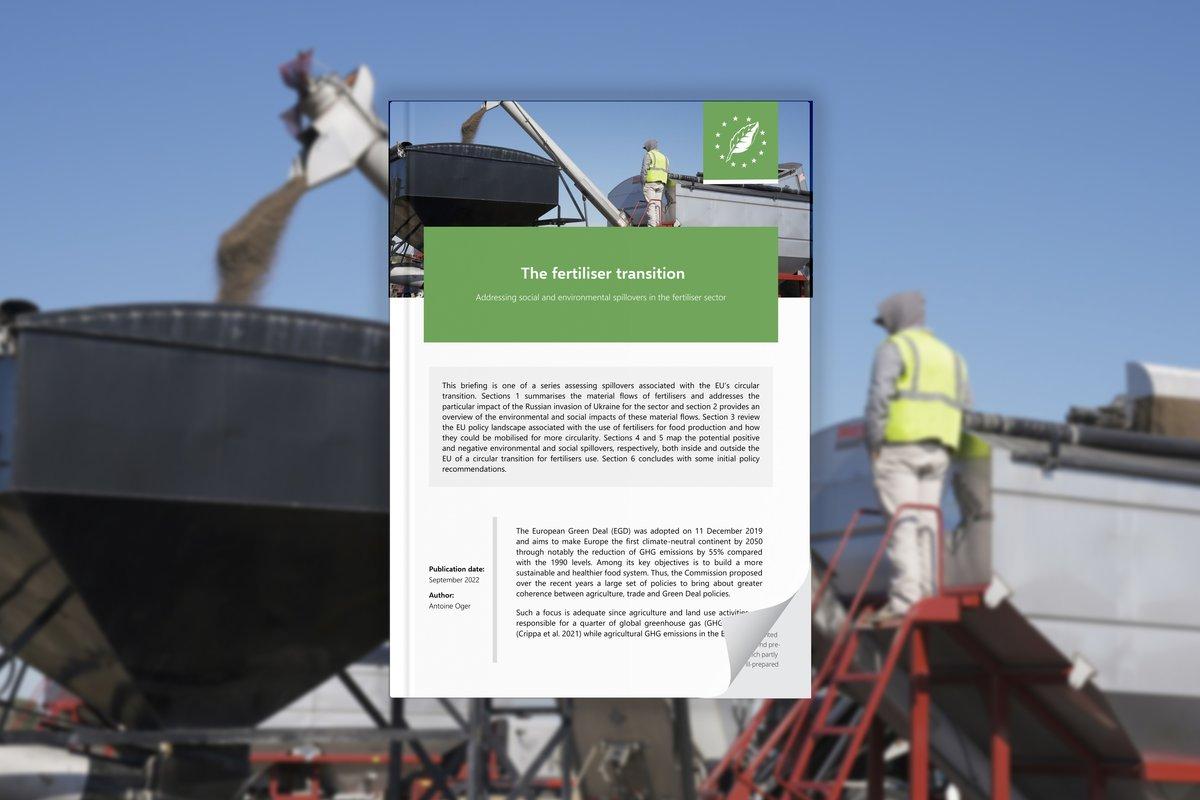AUTHORS: Antoine Oger
The European Green Deal (EGD) implementation would make Europe the first climate-neutral continent by 2050 by reducing GHG emissions by 55% compared with the 1990 levels. The agriculture sector will have a key role to play to reach this objective as it is expected to become the single largest emission source in the EU by 2030.
The current geopolitical, environmental and climate instability can cause significant disruption to agriculture and food supplies (drought, flood, storm, civil emergencies etc.) with detrimental consequences for the EU and even worse for countries experiencing food insecurities.
To address these challenges and to set forth a path for more sustainable food systems transition, more respectful of planet boundaries and wellbeing, the EU proposed several initiatives (such as the Farm to Fork strategy from on 2020). The fertiliser sector, in particular, is covered by specific policies and dedicated targets to decrease nutrient losses, reducing fertiliser use and increasing the total farmland under organic farming.
This briefing maps out some of the main social and environmental spillovers associated with the EU’s transition toward more circularity for the fertiliser sector relating to the implementation of the EU Farm to Fork strategy and Circular Economy Action Plan.
Existent modelling (Barreiro-Hurle et al., 2021 or Poux and Aubert, 2018) suggests that such a transition towards an EU-wide agroecological model is possible, despite inducing a lower productivity of the sector. This briefing proposes several recommendations to that end:
- Implement fully the fertilisers-related objectives of the Farm to Fork Strategy through key policy packages such as the upcoming proposal for sustainable food systems. If combined with appropriate dietary shifts in the EU, the new approach toward fertiliser use can bring substantial environmental gains both in terms of GHG emission and decreased nutrient surplus with minimal socio-economic consequences for farmers.
- Promote nutrient circularity, for instance through the current revision of the Urban Wastewater Treatment Directive. This offers an opportunity to decrease untreated wastewater discharges, put in place stricter nutrient emission limits, and ensure that wasted nutrients are recuperated from waste streams, and promote their reuse.
- Consider the objectives presented by legislations, in particular the Effort Sharing Regulation and the National Emission Ceilings Directive (NECD) for nitrous oxide and ammonia emissions, while ensuring adequate monitoring and sanctions systems in the future Integrated Nutrient Management Plan (INMAP).
- Promote and implement nature-based solutions in Europe and in third countries such as no-till farming, cover crops or rotational grazing. The latest progresses in technology, research and digital innovation could also support a climate-smart and green transformation in the agricultural sector globally.
Read the briefing. This briefing is one of a series assessing social and environmental spillovers associated with the EU’s circular transition.
© Photo by Mark Stebnicki on Pexels

